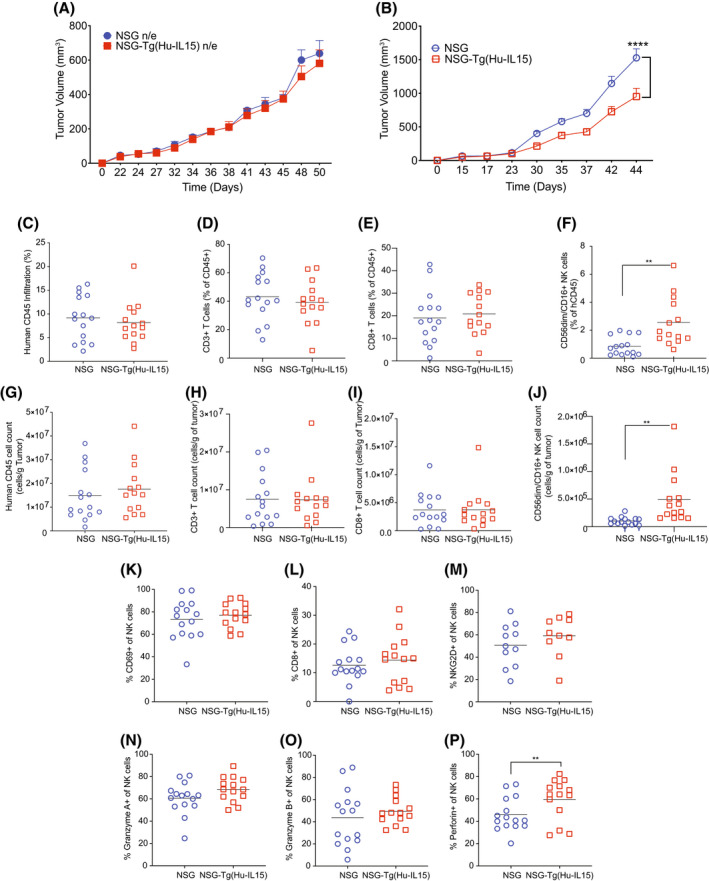FIGURE 6.

Patient‐derived xenograft (PDX) melanoma grows with reduced kinetics in hematopoietic stem cell (HSC)‐engrafted NOD‐scid IL2rγ null (NSG)‐Tg(Hu‐IL15) mice. Six to eight‐week‐old male and female NSG mice and NSG‐Tg(Hu‐IL15) mice were left unmanipulated or engrafted with human HSC were transplanted subcutaneously with PDX melanoma as described in the Materials and Methods. Tumor growth kinetics were monitored in (A) non‐engrafted (n/e, n = 5 mice per group) and (B) HSC‐engrafted mice (NSG, n = 15 and NSG‐Tg(Hu‐IL15) mice (n = 14). Tumors were recovered from HSC‐engrafted mice and analyzed for the percentage (C–F) and number per gram of tumor (G–J) for human CD45+ cells (C and G), human CD3+ T (D and H) cells, human CD8+ T cells (E and I) and CD56dim/CD16+ NK cells (F and J). The NK cells infiltrating the tumor microenvironment were also monitored for surface production of CD69 (K), CD8 (L), NKG2D (M) and the capacity to produce granzyme A (N), granzyme B (O) and perforin (P). Each point represents an individual animal. For statistical analysis, HSC‐engrafted NSG‐Tg(Hu‐IL15) mice were compared with HSC‐engrafted NSG mice; *p < .05, **p < .01, ***p < .001, ****p < .0001. Representative data of three independent experiments.
